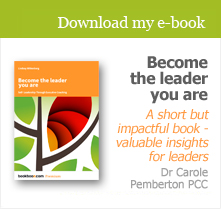World Kindness Day

Every November 13th, the world celebrates World Kindness Day – a global reminder of how small acts of kindness can create a ripple effect that strengthens our connections to one another.
Kindness feels particularly important to me this year, in a world where polarisation – and condemnation of The Other, who is seen so often as The Enemy in the framework of that polarisation – seems to be, or certainly to be becoming, the norm. It feels trite to list any benefits of kindness: they’re so obvious, after all. Or maybe they aren’t so obvious to everyone.
In the striving and pressure for results that some leaders see as their agenda, kindness is often forgotten. In the process, a sense of wellbeing, ease (and that doesn’t mean complacency), confidence, the taking of initiative and intrinsic motivation (the joy and the discretionary extra contribution that come from being able to give expression to individual, personal drivers and passions) can get lost, or at least diminished. Kindness begets kindness – and it also gets more of value achieved. It’s close to compassion, and to the exercise of compassionate leadership.
It certainly beats the effect of not noticing or caring how things are for The Other, of inconsiderate or unwarranted criticism, of self-absorption to the exclusion of others, or of neglecting others and their interests.
Kindness isn’t weakness. Far from it. Kindness demonstrates humanity and strength, and is a valuable tool for the leader because, at least from where I sit and how I observe leadership being lived, it creates precious connections and scope for collaboration, which is critical for innovation, change and versatility: the employee who feels seen and heard, taken account of and considered, will feel led with strength.
It feels to me that we have an urgent need for kindness.
All of which puts me in mind of the L word. Love is being increasingly talked about in the context of work, employment and organisational life. I’m curious about how you might notice it in your environment – and about how it shows up.
Photo by Matt Collamer on Unsplash


